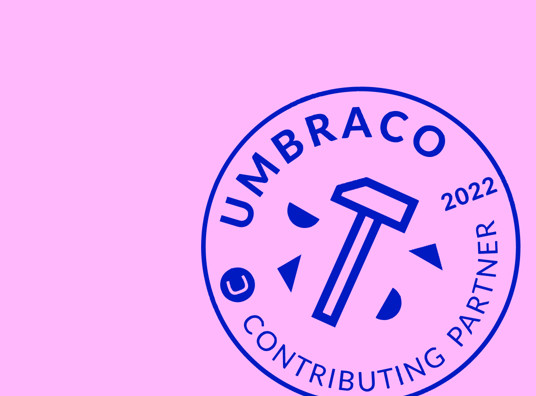Time for a new website?
Considering replatforming is not a decision to take lightly.
Your website doesn’t operate in a vacuum, and the implications of choosing a different solution can be significant. But, are you getting what you need from your current platform, and do the disadvantages increasingly outweigh the positives?
In this article, we explore the benefits of a move from Adobe Experience Manager to Umbraco, and highlight some key advantages.
Umbraco is one of the Worlds leading content management platforms. It’s Open Source, license free, and loved by over 700,000 businesses and organisations world-wide. An increasing number of larger businesses are making the switch to Umbraco, but why would you consider making the move?
Cost vs value
Adobe Experience Manager (AEM) carries a hefty license cost. It’s hard to be specific about that as a number of variables affect the price, but chances are if your website attracts a reasonable scale of traffic, is quite image and content heavy, and you’re using elements of customisation and A/B testing, you’re likely talking somewhere in the region of £100,000 - £200,000 per year, quite possibly more. We know of clients with high-usage websites and complex implementations paying in excess of £300k each year.
Either way, that is a significant proportion of any website project investment, sunk. And, that’s ok, if you’re really getting value from it. But, as an alternative, Umbraco has become a key part of how we answer our clients digital needs.
Umbraco is a powerful content management system that is flexible, extensible and easy to use. It is also Open Source, so it is free and its success is community led. This means it is constantly evolving, updating and being enhanced. This is all whilst being underpinned by Microsoft. It utilises .NET Core which means that security and robustness are at the heart of the platform.
In this time of extreme cost-consciousness and even greater scrutiny, ask yourself, is that six-figure annual investment really worth it? You could invest that in a richer, more unique user experience, or added functionality for your users to help improve the effectiveness and differentiation of your digital channel for your business.
3rd party integrations
But all Experience Platforms provide out-of-the-box integrations right? Not entirely. AEM does to some extent, but there are challenges with to the underlying approach to integrations and extensibility. This is because at its core AEM is a traditional DXP (Digital Experience Platform). A traditional DXP is a monolithic product that provides a suite of tools powering the delivery of connected contextualised experiences. A complicated way of saying that a monolithic DXP tries to solve everything for everyone.
This has drawbacks when it comes to 3rd party integrations because it means that the tools that you can use are often pre-determined on your behalf and limited. This can have a negative impact on your solution when the needs of your project are not met by the approach that AEM gives you ‘out of the box’. If you have very specific needs for commerce or personalisation you might find that you are better suited to a different provider rather than the pre-chosen approach from AEM. Of course, AEM does let you integrate with some 3rd parties but it is not always straightforward because the initial intention has always been to use their pre-selected approach.
This is where a more composable approach (and a composable DXP) fits in.
Umbraco allows you to create a composable DXP which enables complete flexibility around the solutions that are integrated to create your specific, focussed and custom DXP. Each tool can be selected based upon its ability to meet your specific requirements, and importantly are only integrated if and when they are needed, only paid for when they are used, and can be flexible enough to integrate with any existing tech infrastructure or platforms in place. That last point is particularly important as this is a big advantage for many clients. For instance, Parmenion, one of our Umbraco clients already had an existing tech solution that handles most of their form and campaign integrations and analytics. Due to the nature of our Umbraco composable DXP solution they did not need to compromise or invest in costly new applications to meet the requirements of their new website platform. We simply integrated the existing architecture straight into their new DXP.
Scalability
Scalabiity is sometimes just understood as ‘managing the amount of users on your website’ and of course you do need a website that can remain performant and reliant when there is a spike in traffic.
But outside of just visitors, a scalable platform means much more than that. It provides:
- The ability for the site to scale to the content available across the site as a whole and the content available on a single page
- The ability to be fit for purpose and deliver a more effective digital experience from day one but not limit the platform possibilities in the future
- A platform that is easy to update, easy to manage and joined up in its architecture
- The ability to be brought to market quickly and continue to grow over time in accordance with ongoing and evolving requirements. As your requirements and needs grow the site needs to be able to scale, adapt and flex to your business.
Using Umbraco as a composable DXP helps us to achieve this. Additionally, utilising Umbraco’s capabilities to allow reusable components also has a significant advantage when we consider providing a scalable platform.
Re-usable components are an implementation technique that allows us to facilitate many aspects of scalability. A reusable component is essentially the concept of creating a custom element that can be used in multiple locations and ways across any page, any page type or any site.
It makes administration easy because the interface the editors use is the same across all components. Content can be built up rapidly as the same components can easily be utilised across multiple pages whilst only needing to be created and managed once.
For our work with Aardman Animations, being able to build up the content rapidly is particularly important. They will often need to create content to coincide with a press release or an update to fans quickly and in those circumstances the flexibility that using components gives them is incredibly valuable. That’s because in those circumstances it is likely there will be differing amounts of content available for those pages and a component-based approach means that they don’t have to complete all content elements to publish a page. Just as importantly, the page won’t look like it is incomplete. It introduces graceful degradation of content.
AEM is traditionally implemented as a templated approach to building pages. A templated approach is often time consuming and doesn’t allow you to create this graceful degradation or flexibility of content that you are likely to need. Instead, pages will often look incomplete or poorly constructed and administration can be slower or more difficult as you are susceptible to a lot of pre-requisites to get your page live.
Performance
With AEM, SEO implementation and performance frequently scores below its competitors.
In our experience it can be difficult to achieve great technical SEO benchmarks from tools like Google Lighthouse or Page Insights for sites that are built on AEM. Often this is related to the ability to properly ‘fine tune’ the settings across the platform to get all the things that Google cares about working as expected, whether that is caching, text compression, accessibility or image types we have found that AEM can find it hard to ‘keep up’ with an ever-changing search landscape, latest improvements in performance technology and technical SEO.
This is simply not the case with Umbraco, we often host with Microsoft Azure in a headless architecture and this approach coupled with the control provided by Umbraco allows us to achieve excellent SEO performance scores. This is particularly important when Google ranking is influenced by these metrics.
If organic traffic is critical to your website’s performance, Umbraco is a smart choice. We’ve been able to significantly increase organic search performance from the previous platforms in all our clients' implementations.
Ease of use
Umbraco is known as the friendly CMS for a reason. It is one of the most intuitive CMS platforms to work with as an editor or content marketer. It’s been rated Easiest to Use and having Best Usability by Global Software marketplace - G2, when compared to hundreds of other platforms.
Being easy to use is particularly important for websites where the content is going to be a huge part of the success of the platform. We want content editors and administrators to be able to publish new content and manage form data without the overhead and investment of significant training, and for it to be simple and straightforward to do their day-to-day job, well. Where we have re-platformed clients onto Umbraco, we receive extensive feedback as to how much time it has saved them making content updates, how intuitive it is and how they had previously been paying substantial license fees for an inferior editor experience.
Any digital experience platform can only achieve so much in and of itself, but choosing the right solution for your requirements can be such a strong foundation on which to create a transformative and effective digital experience.
If you’re considering re-platforming your digital estate or website or questioning the value you’re getting from your existing solution, get in touch to discuss your options. We’d love to help.


